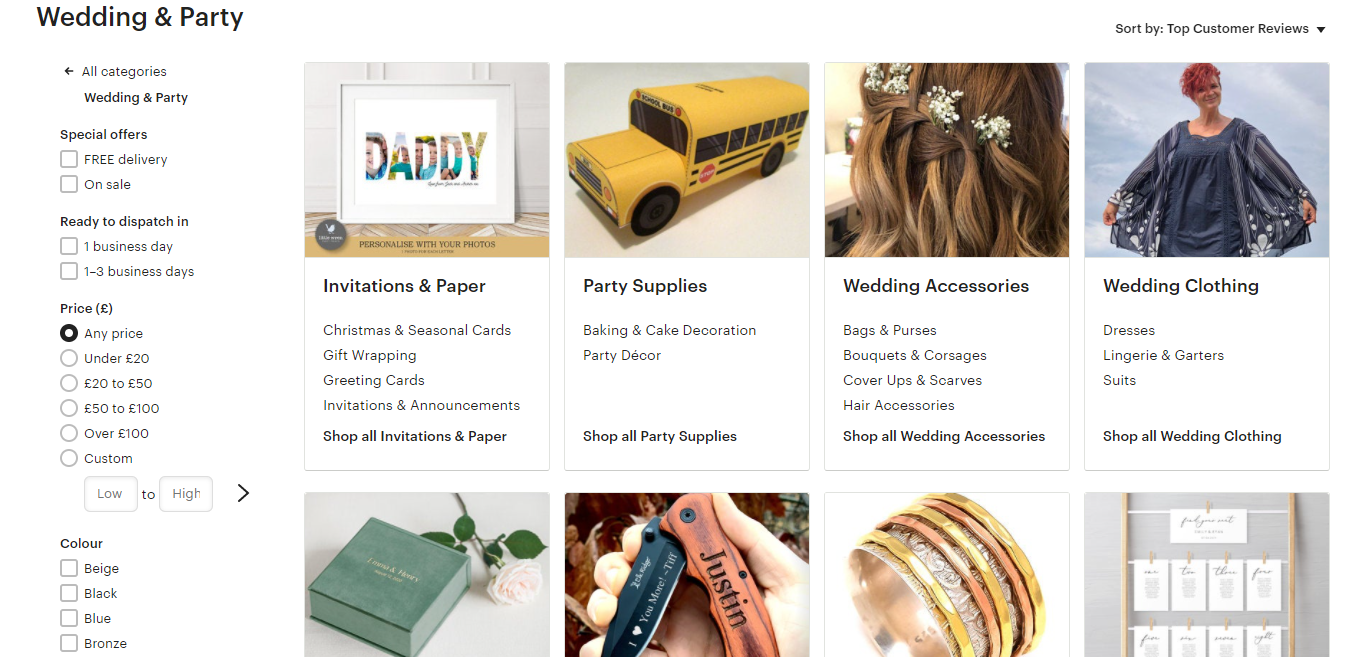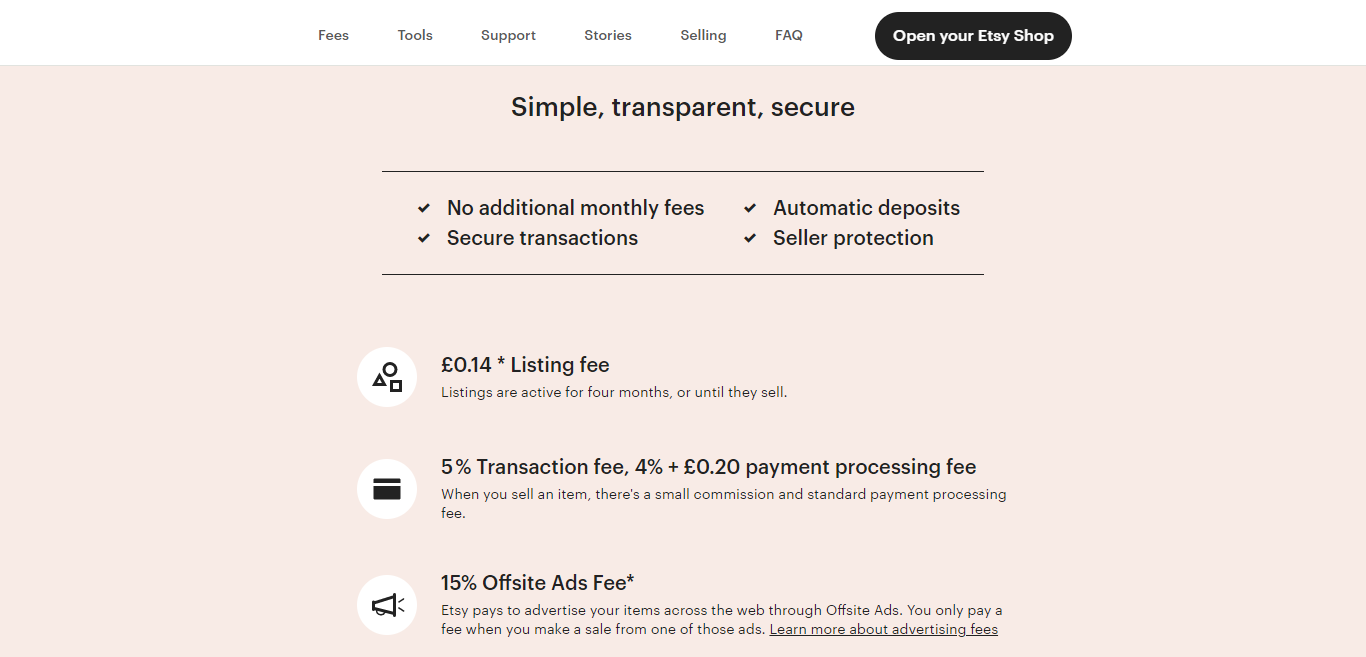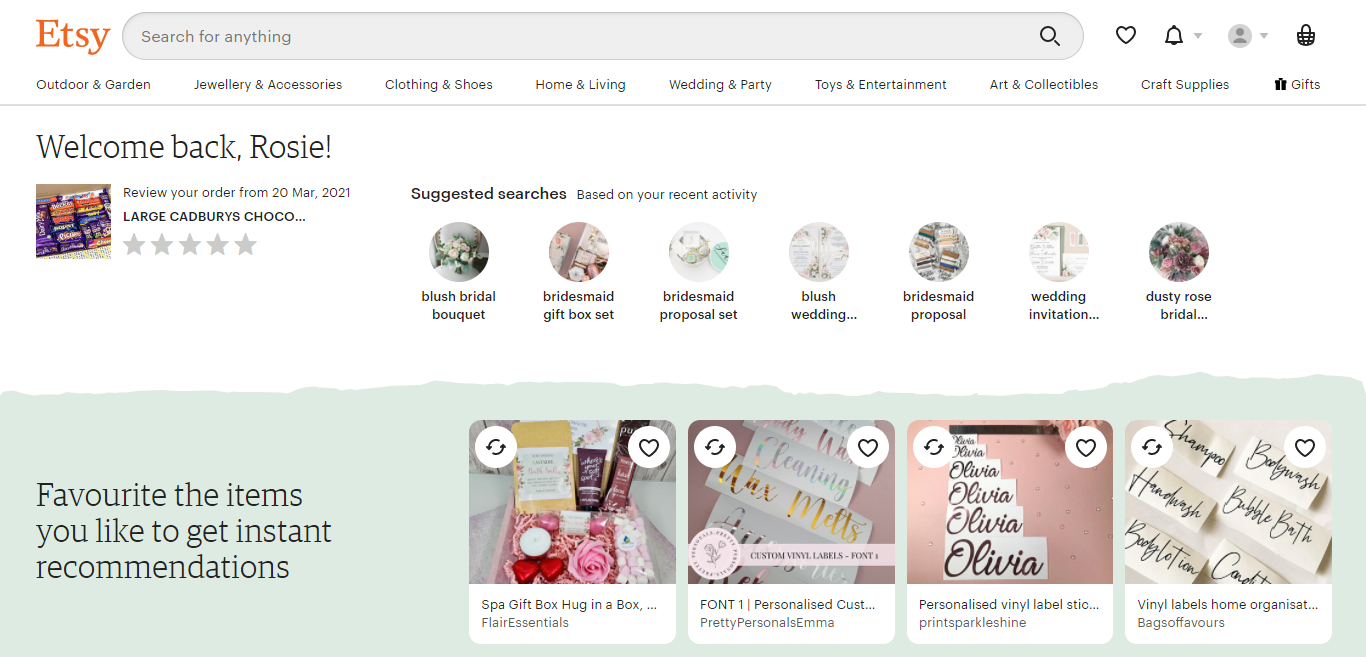Etsy is a popular online marketplace was created to provide creative hobbyists and crafters an affordable way to start selling online. Etsy provides merchants with loads of perks, not least exposure to millions of browsing in the hopes of purchasing all sorts of high-quality products.
That's enough preamble; if you're interested in learning more about what this online marketplace has to offer, here’s everything you need to know about Etsy:
What is Etsy?
Founded in 2005 in New York, Etsy is a global marketplace for “unique and creative goods.” It was explicitly designed to provide creative and skilled individuals a way to monetize their hobbies and share novel items with an online community.
Etsy’s shop owners come from all walks of life, but generally, the products you'll find on this platform have a few things in common. For instance, usually, items are handmade or curated vintage goods and/or crafting supplies.
This suits a range of imaginative hobbies and professions, including:
- Design and illustration
- Crocheting and knitting
- Papercrafts
- Carpentry
- Personalized items
- Jewelry
- Home decor and furniture
- Toys
- Arts and crafts (supplies and tools)
Each seller's independent and represents themselves on the platform, giving Etsy a human touch like no other online marketplace.
How to Sell on Etsy
Etsy is a fantastic way to get started with online selling. For one, its pricing scheme is affordable. Plus, its focus is on sustaining independent, small businesses; here, creatives can seek support from Etsy's community and tap into a new audience of online shoppers.
That said, let's look at some of the steps you'll need to take to get started:
Choosing Products for the Etsy Marketplace

As we’ve already discussed, Etsy products tend to fit into one of these major categories:
- Handcrafted goods
- Vintage or curated items
- Craft supplies
But one look at the Etsy marketplace quickly reveals a broad range of product categories and types, including digital products like planners, printable cards, design resources, clipart, etc.
Suppose you’re still deciding whether to sell on Etsy. In that case, ask yourself if your product(s) would appeal to Etsy's intended target audiences.
Etsy’s buyers are looking for unique items with a personal and creative touch. Generally, they don’t want things they can find elsewhere.
Conducting some research into what sells well on this platform is the best thing to do. You can quickly identify best-selling items and rends in each category based on the highest number of reviews. This is a great starting point.
Let your findings guide your product choices, and go from there.
Understanding Etsy’s Pricing

Although Etsy's an affordable way to start selling online, it's not entirely free. Etsy’s most substantial costs are its listing fees.
For each item you list, you have to pay $0.20. These are either automatically deducted from the sales you make.
Or they're taken from your account if you have a negative balance at the end of a month. Listings expire after four months and need renewing. You also pay listing fees when an item's sold and triggers a new article to automatically re-list.
For example, if you have five handmade bags to sell and they're put up as one product, you’ll pay the listing fee for the first bag. When that bag is sold, you’ll have to pay the listing fee again to list the second bag, and so on. Listings can renew automatically or manually; the choice is yours.
Note this system also applies to digital products. Each individual download incurs the same $0.20 listing fee.
If you're selling physical items, you also need to cover your shipping costs and transaction fees. In certain countries, you can print an Etsy shipping label, the price of which varies depending on the distance, size, and type of item.
You’ll also pay a delivery transaction fee equal to 5% of the listed postage cost for your item.
On top of this, there are payment processing fees with Etsy Payments. This is equal to a percentage of the total sale (this varies depending on your location) plus a flat fee per order. For example, these fees in the UK are 4% of the sale price + 0.20 GBP.
Ultimately, these costs are all deducted from your profits. The only upfront cost you need to handle is the listing fee, meaning Etsy requires very little initial investment.
Creating Etsy Listings
Optimizing your listing is a vital step to ensuring your products attract attention on Etsy. Most notably, your product photos, title, and description. But beyond this, you can set tags, categories, and more to give potential customers (and Etsy) a clearer idea about the products you’re selling.
Your Listing Photos
Etsy allows you to publish up to ten photos per listing. The more snaps you include, the better.
Etsy proposes several concepts to help get you started with this. For example, including a picture of the product being used from different angles, a size comparison, a flattering scene, a close-up to show the finer details, etc.
Recently, Etsy has also enabled business owners to include a product video, which can be between 5-15 seconds long.
Your Listing Title
Etsy provides a guide on how its search works, which is helpful to any first time sellers looking to optimize their listings.
Your product titles play a huge role in this; it's the perfect place to include relevant keywords.
Here are some best practices to help you create the perfect product title:
- Include about three keywords separated with commas
- Perform some keyword research to see what your target customers are searching for
- The words at the beginning of product titles are considered more important than the words at the end. So ensure your most relevant keywords are inserted right at the start.
Your Listing Description and Other Details
Etsy’s listing descriptions don't feature in its search algorithm. However, they do for Google's. Don't let this valuable space go to waste. Be sure to optimize your product description for SEO by including relevant keywords.
Most importantly, ensure the first 150 characters of your description include all relevant terms and phrases. This forms the meta description that's displayed on Google's search engine results.
Beyond the description, you can assign tags and attributes to your listing. It’s recommended you fill these out in detail to increase the likelihood of customers finding your products when they search for specific attributes, like a particular color or material.
Marketing Your Etsy Store
While you might score some purchases via the Etsy search algorithm, it’s unlikely you’ll significantly grow your online store this way.
Etsy boosts your store in its search results when it achieves clicks, favorites, and orders. In other words, if no one discovers your storefront, you don't stand a hope of getting found in Etsy's search results, either. This means marketing your store independently to draw customers to your products.
This is why so many Etsy sellers rely on advertising their products on social media platforms like Facebook and Pinterest.
You may also benefit from building an email list and sending updates and discounts to your customer base. If you're unfamiliar with these marketing techniques, it's worth doing some research into the basics.
Sales and Discounts
Etsy allows you to create promotional sales and customer discounts. You can send single-use discount codes, share a discounted product link, or set a promotional sale that applies to your entire Etsy store.
You can also decide which listings and product categories the sale applies to and set the promotion length. You also have control over whether you discount products at a flat cost or a percentage rate.
Etsy also enables you to send basic abandoned cart campaigns. You can automatically send discount codes to people that recently added products to their cart and left them. Or those that favorited one of your items and didn't purchase.
You can also send automated thank-you messages containing a discount code. This works wonders for encouraging repeat purchases, and it's an excellent way of rewarding customer loyalty.
Etsy Ads
Finally, you also have the option of creating and launching Etsy ad campaigns. You can do this within Etsy’s Shop Manager. Just set a daily budget (the default minimum is $1 per day).
Then enable the ads to show throughout Etsy, Etsy search, category pages, and market pages. Simple, right?
How to Sell on Etsy with Shopify

Suppose you’re looking to expand your existing Shopify store. This is easily achieved by integrating your Shopify and Etsy accounts. When you do this, you benefit from:
- Synchronizing your inventory, which makes it easier to manage both your Shopify and Etsy shops simultaneously.
- You can import and export products from one platform to the other.
- Its easier to manage bills and orders under the same business entity.
- You can draw Etsy customers to your own website.
Unfortunately, Etsy isn't one of Shopify’s native omni-sales channels. But you can install the Etsy marketplace integration from the Shopify app store to unlock all these benefits. This app syncs your inventories across both platforms.
It also adjusts the currency of your Shopify store to match the currency used by the Etsy buyer visiting your website. It can even ensure Etsy listings are deleted if you delete a product from your Shopify store.
The app also retrieves existing shipping templates from Etsy to ensure access to essential product details and values from your Shopify account.
However, it’s worth noting that this integration comes with its own cost. The free plan is limited to just ten Etsy products. To upgrade and unlock larger quantities, you’ll need to pay at least $39 a month.
Consequently, using both Etsy and Shopify together is likely reserved for more established startups generating enough profit to cover these costs.
The Pros and Cons of Selling on Etsy
Last but not least, here are the main advantages and drawbacks to selling on Etsy:
Pros 👍
- Over 32 million users a month visit Etsy; there's a good chance your target audience is somewhere amidst that large crowd!
- Etsy is the ideal place to sell homemade goods, crafts, and vintage items. If you’re creative, you’ll find yourself amongst like-minded sellers and an audience that's already looking to support artisans.
- Etsy doesn’t require high upfront costs. You only need to worry about covering your listing fees; everything else is deducted from your profits.
- Etsy is easy to use. There's a simple, streamlined process for creating listings, and Etsy's shop manager dashboard makes all your options clear from the get-go.
- Customers can pay using a wide variety of methods: Etsy Payments, credit card, debit card, Etsy Gift Card, Google Pay, Etsy Credit, Etsy Coupon, some bank transfer services, PayPal, Apple Pay, etc.
- You can sell both digital and physical products.
- You can easily create discounts and run promotional sales to market your products.
Cons 👎
- You're charged a listing fee and various transaction fees on each item you want to sell. Ultimately, this cuts into your profits. If you trade in high volumes, running your own website might be cheaper.
- You still need to do lots of your own marketing to get noticed on Etsy.
- You don’t have any control over your product pages and online shop layout.
- It's harder to build your own independent brand.
What is Etsy? Our Final Thoughts
There you have it. Etsy is a great online marketplace for creatives and independent artisans selling handmade items, especially if you’re just starting out. It’s easy to use and relatively simple to get started with, and you don’t need to invest a lot up-front.
Etsy is perfect if you’re looking for a side hustle and want to make some money from your creative hobby.
However, if you’re serious about running an eCommerce website as a full-time gig, platforms like Shopify are a better solution.
These kinds of solutions permit you to own your website and build your brand with a broader range of integrations and shop management tools.




